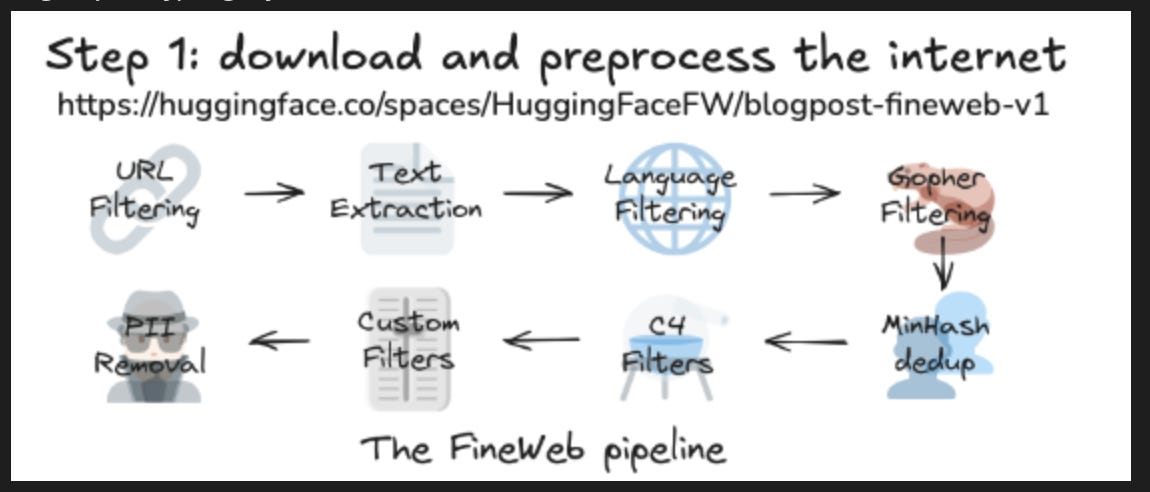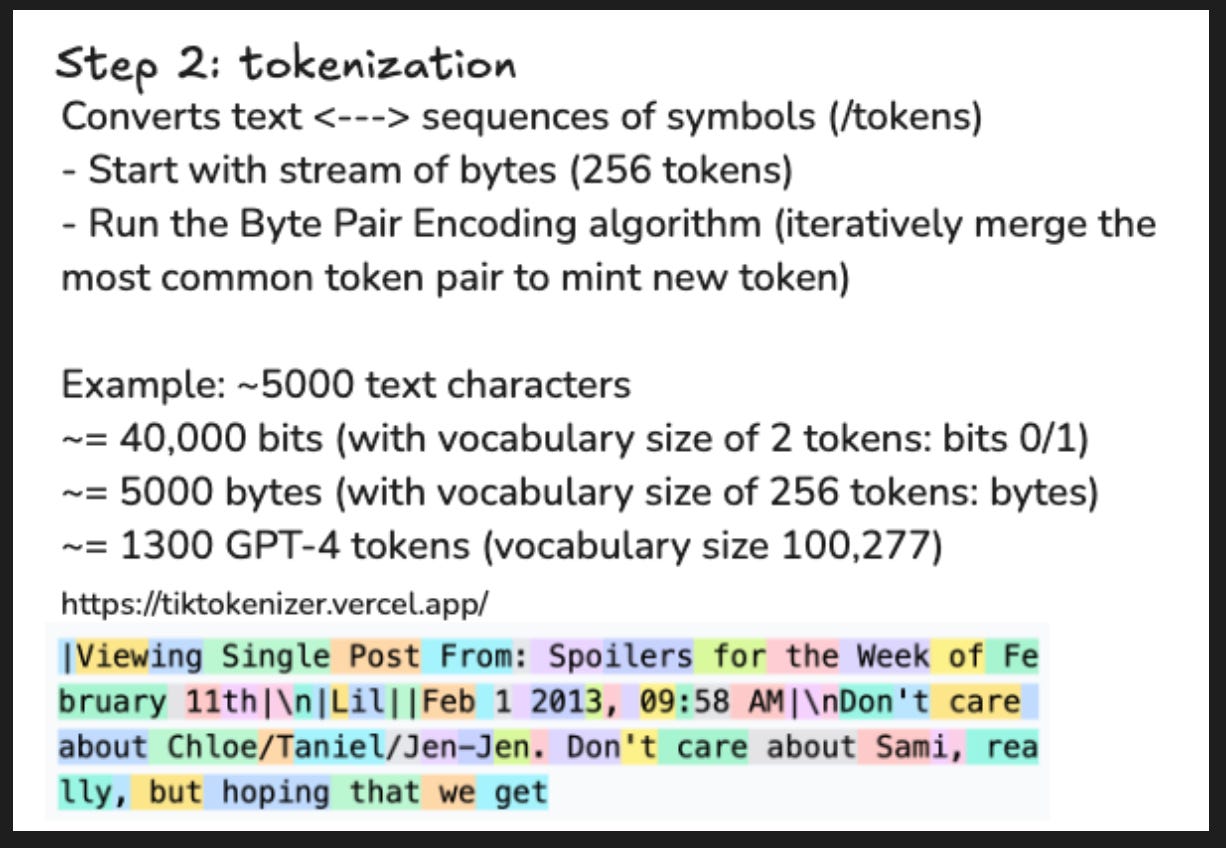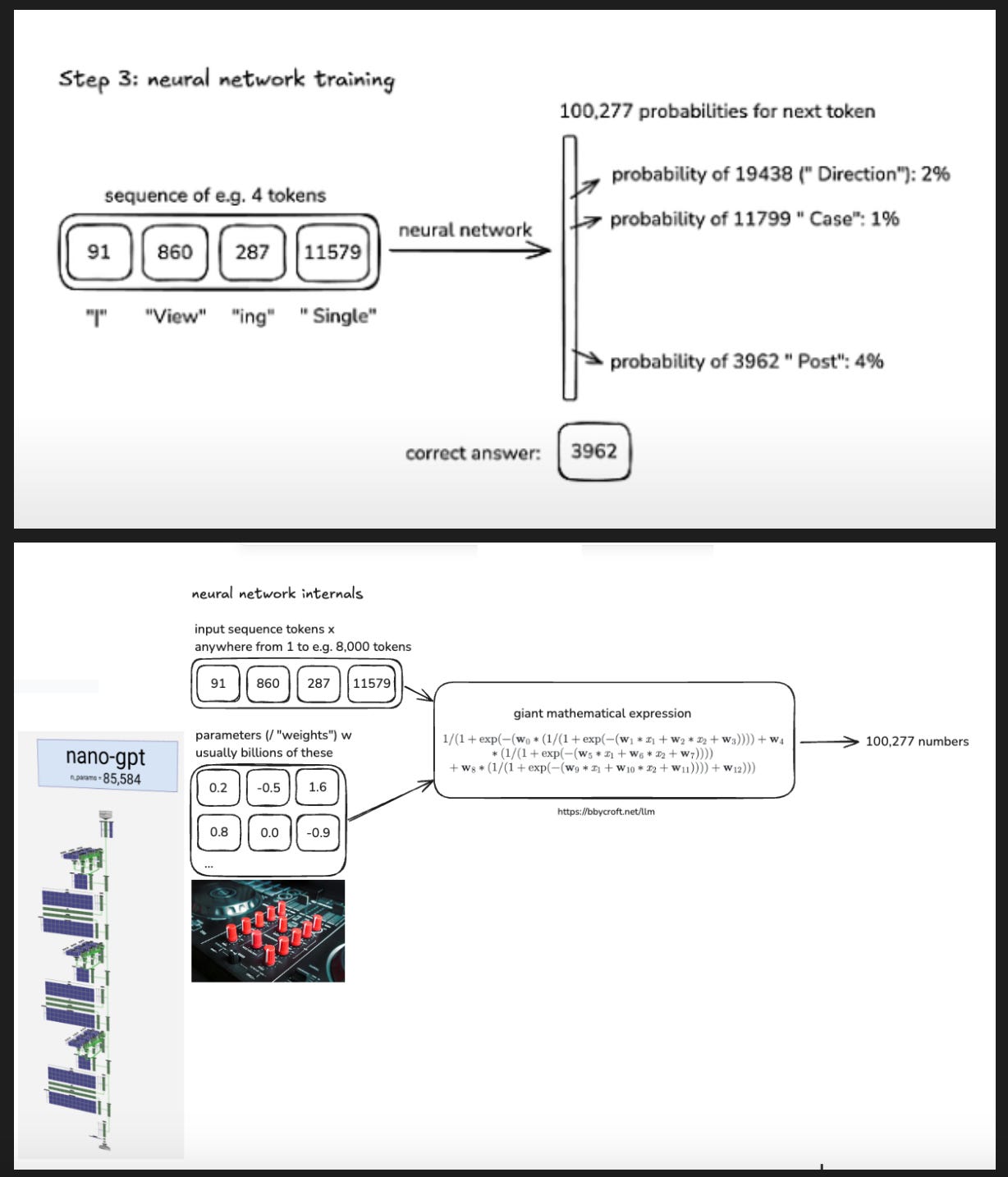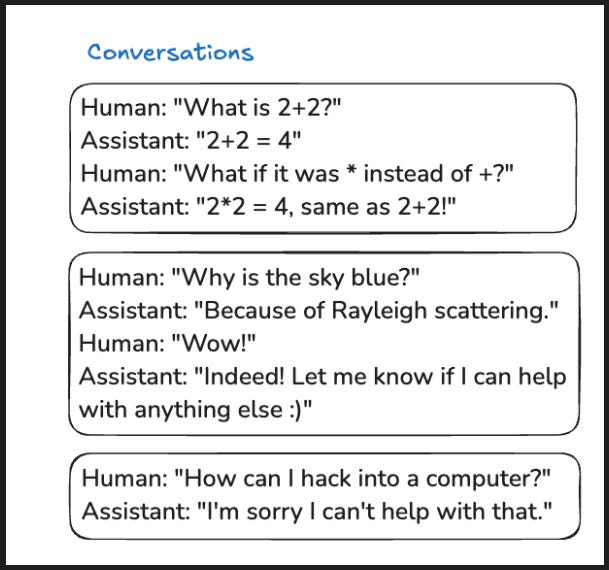I think everything that Andrej Karpathy shares on X or YouTube is a goldmine of information, and his latest video, Deep Dive into LLMs like ChatGPT, is no exception. It provides an in-depth breakdown of the key mechanisms behind LLMs. At a whopping 3 hours and 30 minutes, it covers a lot of ground, and I’d highly recommend watching it. But in case you haven’t watched it because it’s too long, here’s a TL;DW version.
TL;DW (Too Long; Didn’t Watch)
LLMs are trained in two main stages: pretraining (learning from vast datasets) and post-training (fine-tuning via human feedback).
Pre-training involves "downloading and processing the internet," using datasets like Hugging Face’s FineWeb (44TB, 15 trillion tokens).
Post-training refines the model with Supervised Fine-Tuning (SFT) and Reinforcement Learning with Human Feedback (RLHF).
LLMs suffer from hallucinations but mitigations include model interrogation, web search integration, and structured reasoning techniques.
Prompt engineering plays a crucial role in optimising LLM outputs and in-context learning allows adaptation without retraining.
LLMs still have challenges like struggles with counting, spelling, and brittleness in certain scenarios, but improvements are ongoing.
Key Takeaways from the Talk
1. The Foundation: Pretraining on the Internet
The journey of building an LLM begins with pre-training on massive text datasets. Karpathy describes this step as effectively "downloading and preprocessing the internet." Large-scale datasets such as Hugging Face’s FineWeb (44TB, 15 trillion tokens) play a crucial role in training models to predict the next word in a sentence—a technique known as self-supervised learning.
Key processes in pretraining include:
Downloading or using an existing large-scale dataset and pre-processing the data as follows:
Tokenisation – Converting raw text into token sequences.
Neural Network Training – Teaching models to generate coherent text based on input sequences.
Inference
However, a base model at this stage is essentially an "internet document simulator"—good at predicting the next token but not optimised for useful conversations.
I really like the idea of “The psychology of the base model” as described here:
2. Post-Training: Making LLMs More Useful
Once a base model is trained, it undergoes two crucial post-training steps:
Supervised Fine-Tuning (SFT): This involves feeding the model high-quality instruction-response pairs to refine its outputs and align them with human expectations.
Reinforcement Learning with Human Feedback (RLHF): Karpathy likens this stage to a student practising problems after learning theory. RLHF helps shape the model’s behaviour, making it more aligned with human preferences, reducing harmful responses, and improving coherence.
3. Addressing Hallucinations
A significant challenge in LLMs is hallucination—where models confidently generate incorrect or nonsensical information. Karpathy highlights mitigation techniques such as:
Model Interrogation – Teaching models to recognise gaps in their knowledge.
Tool Use & Web Search – Allowing LLMs to query external sources to verify facts.
Encouraging Reasoning – Asking models to "think step-by-step" before answering complex questions.
4. Prompt Engineering & In-Context Learning
Karpathy dives into prompt engineering, explaining how well-structured prompts can drastically improve model outputs. He also discusses in-context learning, where LLMs learn from the structure of prompts without needing weight adjustments—making them highly adaptable.
5. The Future of LLMs & Open Challenges
Despite their remarkable capabilities, Karpathy acknowledges that LLMs still face fundamental limitations, such as:
Struggles with counting and spelling.
Brittleness in certain use cases (Swiss cheese model of capabilities).
The challenge of extending structured reasoning to open-ended creative tasks.
Yet, the field is advancing rapidly, and we’re only scratching the surface of what’s possible with AI-driven reasoning and problem-solving.
I don’t think LLMs were compared to Swiss Cheese before (or at least I’ve not come across this analogy before) but I like it.
Why You Should Watch the Talk
Karpathy’s presentation provides a non-technical, clear, and engaging deep dive into how LLMs are trained, fine-tuned, and improved over time. Whether you’re interested in building AI applications, understanding AI alignment, or just fascinated by the inner workings of ChatGPT, this talk is an essential watch.










